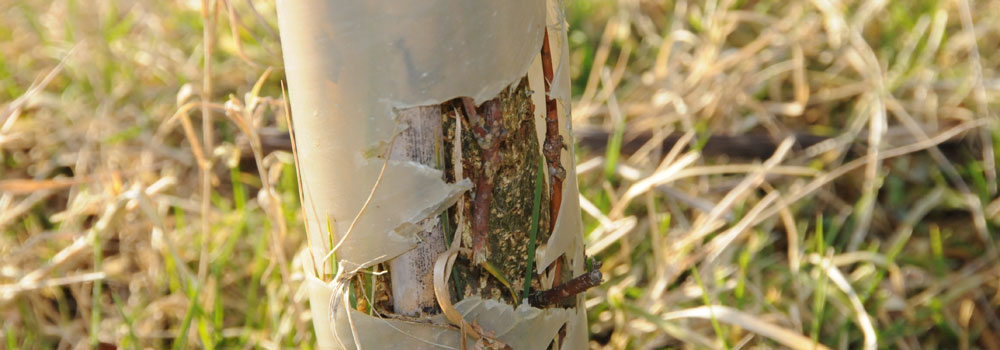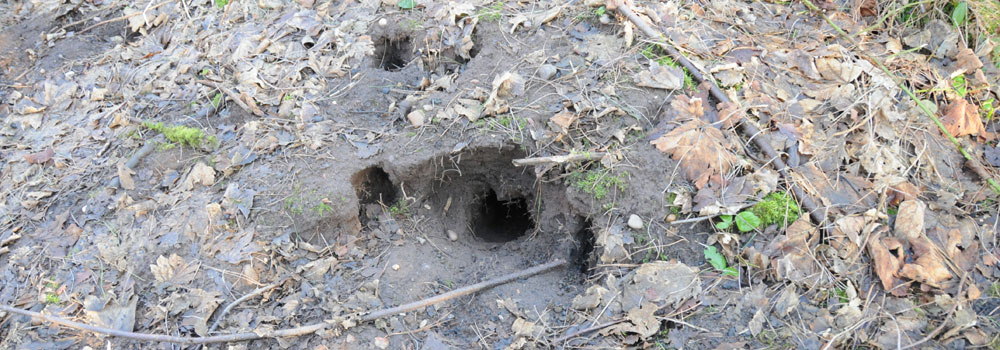Rabbit Damage
While the European rabbit is an important part of the food chain for birds of prey, foxes, wild cats etc., it is a major pest species in the UK, causing damage to crops, businesses and infrastructure. According to research carried out in 2010 for the English, Scottish and Welsh governments by CABI, the international agriculture and environment organisation which provides information and applies scientific expertise to solve problems in agriculture and the environment, rabbit damage is costing the UK economy more than £260M a year.
With six rabbits eating as much as an adult sheep, there is little wonder that the rabbit is considered to be the number one pest for British farmers.
In areas where horses and other livestock are kept, the devastation caused by rabbit grazing leads to a loss of grazing, and a need to buy in forage to counteract the loss.
Burrowing rabbits also pose a threat to livestock, particularly horses; a leg down a rabbit hole in a pasture is a recipe for disaster, with a broken leg being one of the least serious outcomes.
In forestry, plantations and orchards, the presence of rabbits can cause serious damage, with ring barking, with rabbits gnawing through the bark around the base of trees, the most common problem, usually leading to the death of the trees affected. Even where the bark is only partially damaged by rabbits, the trees are susceptible to disease and parasite affliction.
The loss of trees not only has a serious financial effect on businesses, but is also detrimental to the local habitat and its inhabitants.
Where coppicing takes place, rabbits will eat the new growth causing the tree to die. Saplings, too, are often targeted and these will require replacing for proper woodland management. Although tree guards can help, rabbits often chew through them in times of extreme hardship e.g. very cold weather, prolonged standing snow etc. Rabbits are easily capable of reaching to heights of more than 500mm, which they achieve by standing upright on their hind legs, and are also capable of climbing in low foliage.
It is easy to see why gardeners hate rabbits, as these animals love eating plants and flowers. Where the area is frequently grazed, rabbit droppings and urine will taint and burn lawns. Rabbits dig scrapes when searching for young plant shoots, causing damage and expense to the garden’s owner, and ornamental trees will also be attacked with relish by the hungry conies.
Rabbit burrows pose a risk to the health and safety of humans and animals, even when these warrens are under decking, garden sheds and/or houses, where they can lead to subsidence.
Along the sides of railways and motorways, the embankments offer a taste of heaven on earth to the rabbit, as these areas are inevitably covered in lush vegetation, providing an ideal, safe environment with food, shelter and little predation. Rabbits in such areas will also feed on adjacent land.
As the trees on the embankments are attacked and damaged by the rabbits, they will die and can become unstable, while the rabbit burrows are likely to cause subsidence, often leading to traffic disruption and/or injury to persons and property.
Municipal parks, sports grounds and golf courses provide ideal habitats for rabbits, even in inner cities, while cricket squares and tennis lawns can be ruined in a matter of days.
It is possible to sustainably manage rabbit populations, and in conservation areas, a healthy rabbit population is necessary for the preservation of some species and habitats, e.g. rabbit-grazed dunes are needed for the breeding success of the rare natterjack toad, while wild rabbits are beneficial to some species of rare grassland butterflies in controlled grazing conditions. Rabbit grazing also helps prevent the colonisation of undesirable species on sand dunes, and so helps sustain that habitat. However, even in rabbit-dependent habitats, a lack of rabbit management may lead to over-grazing and ultimately be damaging to the area
Industrial parks, factories and warehouses, often encompassing grassed areas with many trees and bushes, attract rabbits, which may well proceed to dig their burrows under roads, buildings and other infrastructure, leading to erosion and subsidence. Such damage can lead to disruption and financial losses, not to mention the obvious health and safety concerns.



